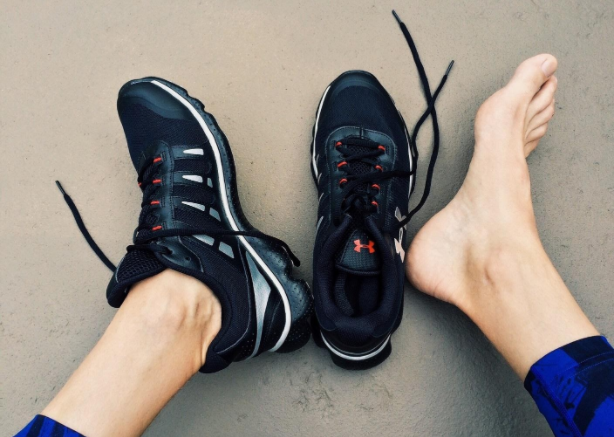Part 2 of 2
In part one, the causes of plantar fasciitis were discussed. In part two we will discuss different treatments for this condition. Treatments are widely varied and the proverbial “one shoe does not fit all” (pun intended) applies. When treating this condition, use conservative measures first then move to less conservative measures if the condition does not resolve.
The following home care protocol is provided by the American Academy of Podiatric Sports Medicine:
Home care
Ice the affected area in the acute phase. Elevate and rest your foot. Roll the bottom of the foot on a frozen bottle of water.
Take over-the-counter anti-inflammatory medication such as ibuprofen or naproxen. This should only be a short-term option.
Try shoe inserts. There are shoe inserts you may find at a running shoe store or custom-made through certain health care professionals that may lessen the impact on your plantar fascia. However, it may take some trial and error to find an insert that helps you.
Nix barefoot walking and use supportive footwear. It may feel good but wearing supportive shoes indoors and outdoors is a better option. Having your foot assessed for the proper sneaker may be helpful. Summer is a season that tends to lend itself to an increase in the number of plantar fasciitis cases due to increased levels of activity and the use of poor shoes.
Rethink your exercise routine. It is still important to be physically active but avoid foot-pounding exercises, such as running or jumping, until symptoms subside. Try some lower impact options such as cycling or swimming and avoid overdoing things.
Stretch your feet regularly. Stretch even before you get out of bed. While seated, take a towel or a flat-resistance band wrap under the ball of the foot, and pull the ends of the towel or band slowly so your toes are being pulled toward the body to keep the plantar fascia lengthened. Foot and calf stretches before and after physical activity are also helpful when you have plantar fasciitis.
If you have tried the above for four weeks and you are not getting better, give your health care professional a call. Sometimes plantar fasciitis will get better with self-help measures, but sometimes it will not and letting the problem go on for a longer time without progress allows it to become more chronic and often more resistant to treatment. Also, a professional can differentially diagnose your condition to determine that it is indeed plantar fasciitis and not another type of foot pathology.
Next on the conservative continuum, therapy with a health care professional consisting of one or more of the following may be helpful: manual manipulation of the fascia and bones of the foot, Graston technique, ultrasound, phonophoresis, electrical stimulation, ice, kinesiotaping, additional stretching of the posterior muscle groups or strengthening of the intrinsic muscles of the foot, and/or melt ball exercises. Using night splints or a boot may also aid healing.
If more conservative measures are not working after several months, your doctor might recommend according to the Mayo Clinic:
Injections. Injecting steroid medication into the tender area can provide temporary pain relief. Multiple shots are not recommended because they can weaken your plantar fascia and possibly cause it to rupture. Using ultrasound imaging, platelet-rich plasma obtained from a patient’s own blood can be injected to promote tissue healing.
Extracorporeal shock wave therapy. In this procedure, sound waves are directed at the area of heel pain to stimulate healing. It is usually used for chronic plantar fasciitis that has not responded to more-conservative treatments. Some studies show promising results, but it has not been shown to be consistently effective.
Ultrasonic tissue repair. This minimally invasive technology was developed in part by Mayo Clinic doctors. It uses ultrasound imaging to guide a needlelike probe into the damaged plantar fascia tissue. Using ultrasound energy, the probe tip vibrates rapidly to break up the damaged tissue, which is then suctioned out.
Surgery. Few people need surgery to detach the plantar fascia from the heel bone called a fasciotomy. It is generally an option only when the pain is severe and other treatments have failed. It can be done as an open procedure or through a small incision with local anesthesia.
As always, it is best to discuss these treatment options with your doctor or therapist to see what will work best for each case.

